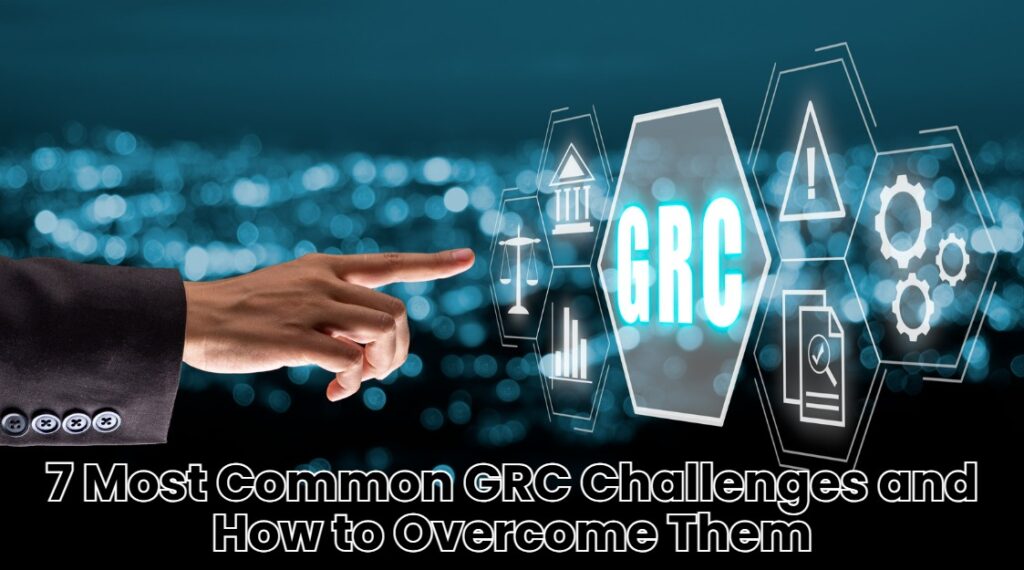Are governance, risk, and compliance (GRC) requirements becoming increasingly complex to handle in your organization? Certainly so, as most businesses experience an overwhelming environment due to the continuous evolution of regulatory requirements, security threats, and organizational risks.
If left uncontrolled, GRC issues may result in increased risk exposure, regulatory fines, and even reputational damage. To help in this management process, a key step is an understanding of typical GRC challenges and how to overcome them. Below we will discuss seven of the most common GRC hurdles and some solutions to that.
1. Keeping Up with Regulatory Changes
Another of the greatest GRC challenges organizations face is keeping up with this shifting landscape of regulations and standards. It is perpetually changing for each industry due to different requirements.
For instance, financial services face strict rules under laws like GDPR, SOX, and HIPAA, while manufacturing companies face compliance challenges against different environmental and safety standards.
Implementation of a dynamic regulatory monitoring system is critical. This would be in automated software that updates whenever there is a regulatory change so that policies are changed in real time.
Further strengthening this layer would be a team assigned to complying with overseeing the interpretation of changes in regulations and the needed communication towards affected departments so that the danger of non-compliance is reduced.
2. Management of Data Privacy and Security Risks
With the rise of cyber threats, the protection of data privacy has become an extremely critical issue for most organizations. A single breach of data can attract multi-million dollar financial loss and could shatter the reputation of any organization. The challenge lies in safeguarding all personal and sensitive corporate data across hybrid or remote work environments, where grc software solutions can play a pivotal role in strengthening data security and managing privacy risks effectively.
Invest in an overarching security plan that addresses encryption, multi-factor authentication, and real-time monitoring for suspicious activity. Employee training is an ongoing process to ensure employees understand why data is protected and what cyber threats are potentially around the next corner. This can include hiring outside cybersecurity firms from time to time to assess your plans objectively.
3. Risk Management Culture
Effective GRC is more than protocols and technology-it’s the risk-aware culture of the organization. Perhaps this is the painful point of many businesses, as most try to embed GRC into their operational processes, but they find it quite hard or rather lack the necessary support from various authorities or maybe do not get enough training to work in this way.
A very basic for this would have been leadership buy-in at top-down levels to adopt a risk management culture. All employees should be subjected to periodic training and workshops to understand their roles in maintaining compliance as well as in managing risk.
Risk and incident-related communication should be motivated without fear of punitive measures. In general, creating a culture of pro-active, collaborative, and compliance-based GRC results in it becoming an integral component of the organizational mindset.
4. Overcoming Silos in Data and Processes
Most organizations operate within silos, and many departments could severely stifle GRC processes. Different departments exist through discrete processes, risk management practices, and even data systems. It is very difficult to include them in an all-encompassing GRC framework. When departments do not communicate as they should, there are opportunities for redundant processes, overlooked risks, and even non-compliance.
Breaking these silos will call for collaboration within departments and the centralization of GRC functions. Central to this integration of GRC functions, especially in reducing departmental silos, would be an integrated GRC software platform that acts as a gateway through which different departments share information, streamline processes, and improve cross-functional visibility into compliance and risk management.
5. Balancing Risk and Innovation
As businesses compete through innovations, the associated risks range from new technology to new markets or new products. Sometimes, it can be a challenge to balance risk with potential benefits. Often, organizations either stifle innovation to avoid risk or overlook risks in preference for rapid growth that can be catastrophic over the long term.
Develop a new initiative risk assessment framework. This will allow you to professionally assess the risks and opportunities of each opportunity and allow your organization to innovate within GRC requirements. Early engagement of the risk management team can further be ensured by the complete evaluation of new projects and appropriate mitigation strategies at inception.
6. Lack of Consistent Reporting and Documentation
Clear reporting is the foundation of GRC management. It is challenging, however, for a large organization with complex structures, and achieving it is quite problematic. Running at the risk of inconsistency in documentation can risk transparency, hence reducing its ability to demonstrate compliance or even consider the risk profile of the organization as a whole.
Implement a standardized reporting framework across the organization. These are templates for incident documentation, risk assessments, compliance reports, and many more GRC elements. An automated GRC tool will be able to support this process, ensuring consistency of reports, and making them accessible, and centrally stored. This makes it more transparent and helps in extracting and auditing reports when needed.
7. Dealing with Third-Party Risk
With the widespread use of third-party vendors and partners in businesses, managing third-party risks is no longer just a good but rather an integral part of GRC. As can be expected, every single third-party relationship has its risks, which can range from cybersecurity threats to specific compliance issues affecting the organization’s overall risk profile.
It is largely overwhelming that most organizations still find it difficult to evaluate and monitor such risks for a variety of reasons, including a lack of resources, standardized processes, and so on.
There should be a good vetting process for the vendors, including due diligence about cybersecurity, their compliance history, and their reputation in the industry. The high-quality risk assessment and monitoring system would analyze third-party risks continuously.
For instance, it might necessitate that third-party vendors should enter into service-level agreements clearly outlining expectations on matters of compliance, as well as conduct regular audits to check compliance.
Conclusion
Addressing GRC challenges is a continuum activity of strategic planning and proactive effort. These common challenges of staying abreast of regulatory changes, and third-party risk management will position your organization for greater resilience, compliance, and operational efficiency.
With the right tools in place, a risk-aware culture forms, and every member of an organization knows their part in GRC, corporations may overcome the challenges presented by the implementation of such methods and thus achieve a safe, compliant, and forward-looking operational environment.
FAQs
- What is one of the biggest challenges in GRC?
Keeping up with constantly changing regulations is a major challenge. Organizations need to adapt quickly to new standards to stay compliant.
- How can organizations improve data security in GRC?
Organizations can enhance data security by implementing encryption, multi-factor authentication, and real-time monitoring, alongside regular employee training on security practices.
- What can help establish a risk management culture within a company?
Leadership buy-in and regular training programs that promote risk awareness are key to embedding a strong risk management culture.

